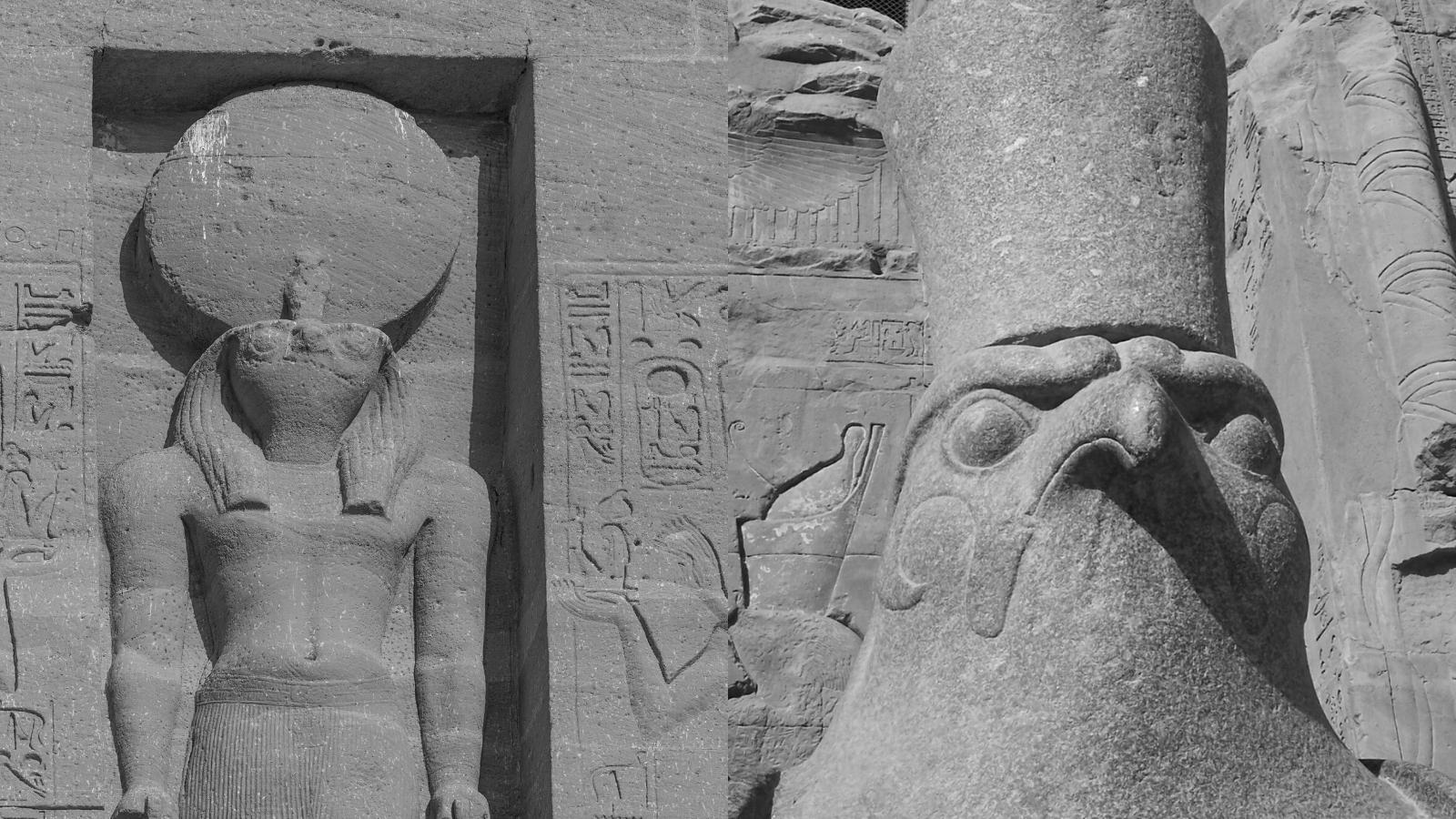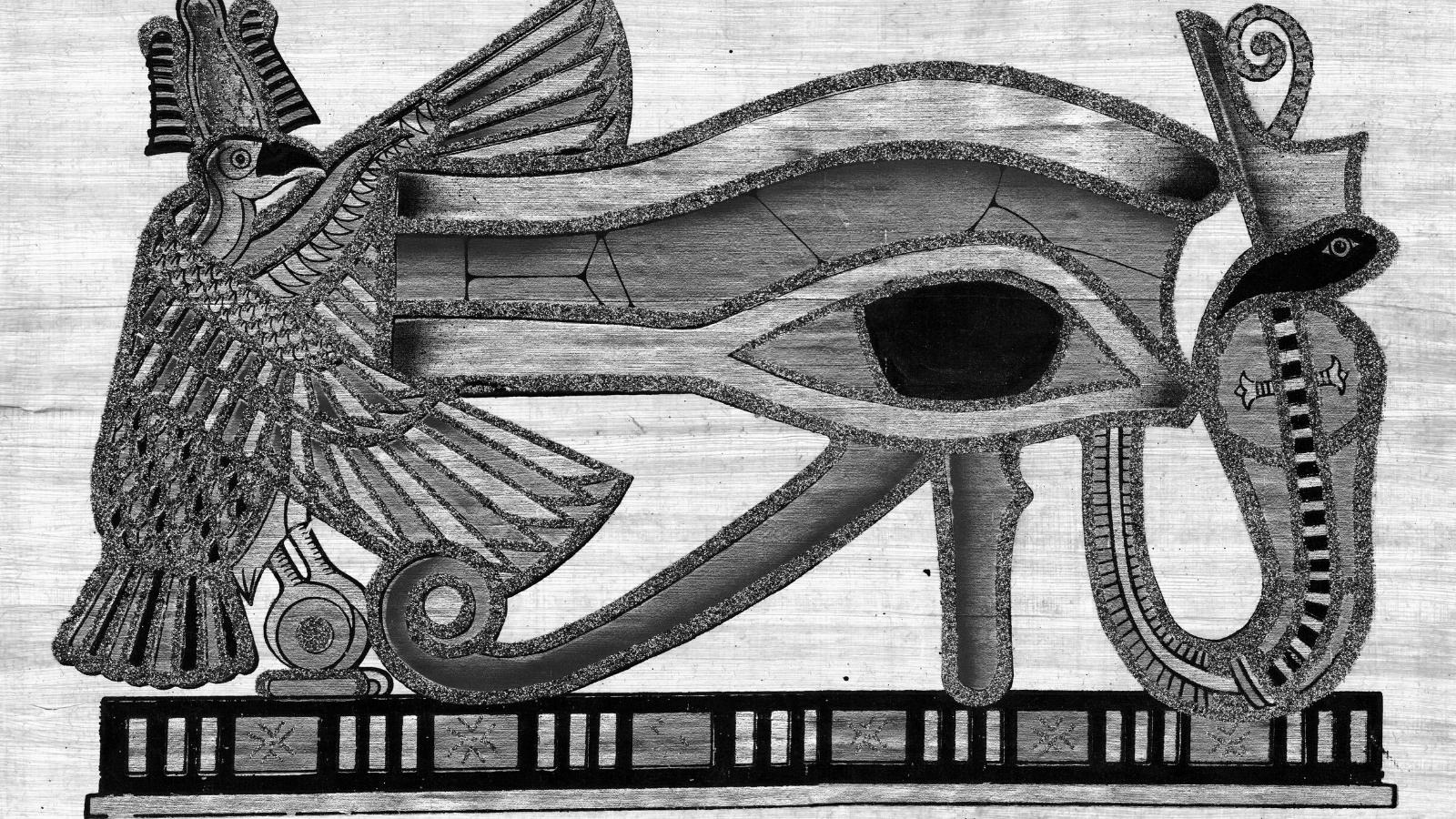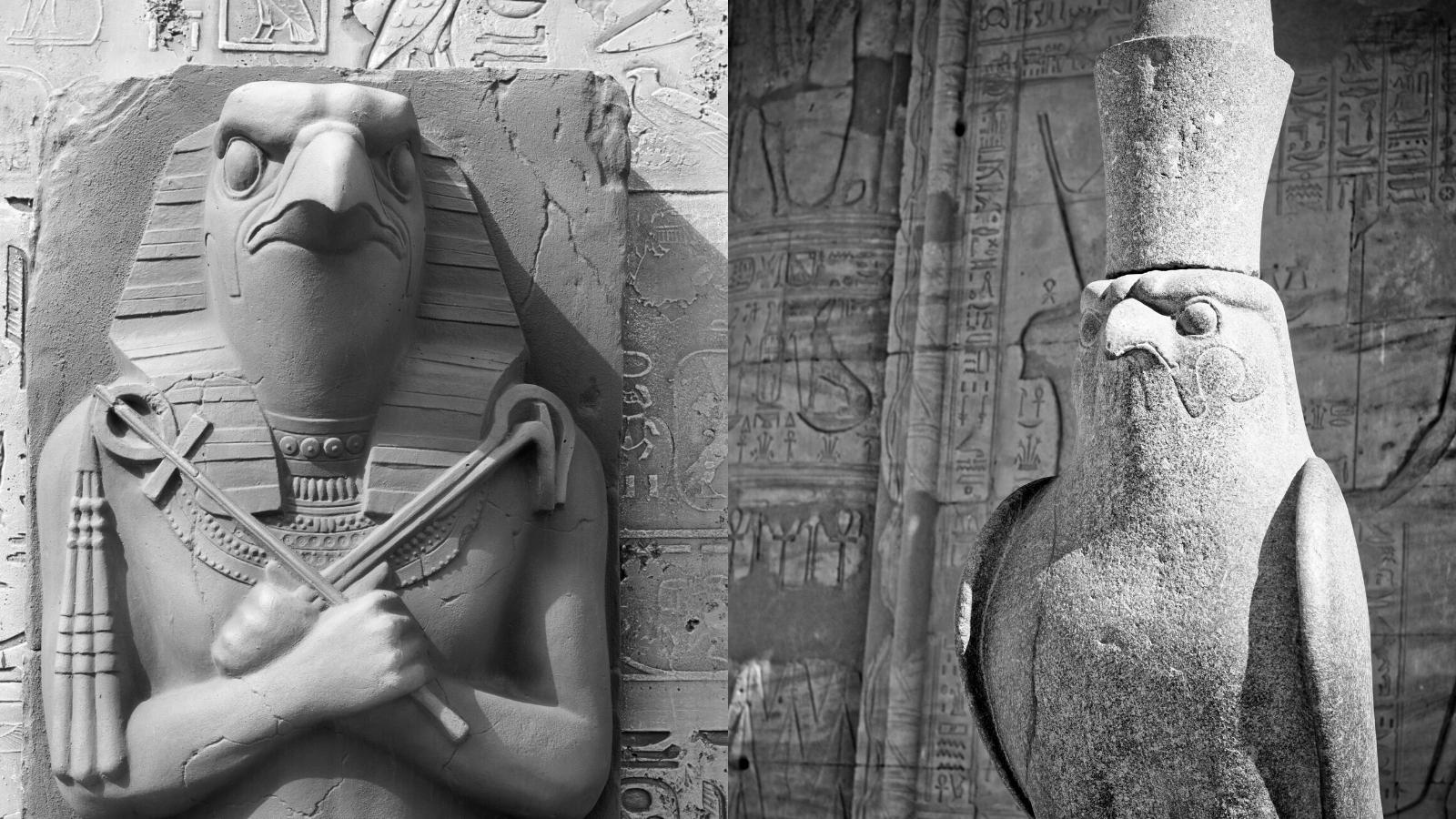Horus vs Ra: The Mythical Eye of Horus and Eye of Ra
Horus vs Ra is a debate as old as time. Both deities have similar symbolisms of an eye, but with vastly different meanings.
In this article, we’ll be taking an in-depth look at two of the most powerful deities and the fascinating symbols they left for the ancient Egyptians.
The Two Gods
Horus was known as one of the most significant deities of ancient Egypt who served many representations and functions. He was well-known as the god of the sky and kingship. He was honored and worshiped starting from late predynastic Egypt up until the Roman Egypt and Ptolemaic Kingdom.
Meanwhile, Ra was considered the king of the deities and the father of all creation, as well as the patron of the sun, heaven, kingship, power and light. He was not only considered the deity who governed the actions of the sun but could also be the physical sun itself and the day.
While similarities are present, the difference between Horus and Ra is also striking.
The Egyptians lived in an agricultural society located in a desert. Thus, unsurprisingly, the sun—and, thereby, Ra—was a fundamental factor of their nature, directing their thoughts and actions. Ra became one of the most important gods in ancient Egyptian religion by the Fifth Dynasty in the 25th and 24th centuries BC.
Ra vs Horus
Ra was most often illustrated as a falcon, and he shared characteristics with the sky god “Horus.” Sometimes, the two deities merged as “Ra-Horakthy,” meaning “Ra, who is Horus of the two horizons.” All living creatures were believed to have been created by Ra, while others believed that humans were created from Ra’s tears and sweat. Hence, some Egyptians called themselves the “Cattle of Ra.”
Horus is often portrayed as a falcon, with a close resemblance to a peregrine or a lanner falcon or an entity with a body of a man and head of a falcon. The earliest documented visualization of Horus was from Nekhen in Upper Egypt. It was the first known national god, which was related to the reigning pharaoh, who was later on considered the representation of Osiris in death and Horus in life.
Horus was the son of Osiris and Isis. He played a vital role in the myth of Osiris as Osiris’ heir and Set’s rival (or Seth), the brother and murderer of Osiris. Hathor was regarded as his mother or his wife in another Egyptian history.
Difference between Eye of Ra and Eye of Horus
The “Eye of Ra” and the “Eye of Horus” are basically the same symbol, but they harbor different meanings. The Eye of Ra is often confused with the Eye of Horus, but they have quite a few distinctions. The Eye of Horus represents the left eye, while the Eye of Ra represents the right eye.
The Eye of Ra
Ra’s power of vision was unlimited. Thus, his eye was called “the eye that sees everything” because his power was quite close to that of the almighty gods of religions observing monotheism. On the contrary, Horus’ powers were limited, and his protection was mostly associated with physical integrity.
The Eye of Ra was represented in dark red painted amulets capable of turning away all negative energy, restoring harmony, protecting against evil entities or spells, and attracting good health. Accordingly, pharaohs used such amulets to defend themselves against any kind of element, intruder, enemy or rival that tried to weaken or compromise their government.
The Eye of Ra had a protective power for the Egyptian pharaohs, perhaps as a kind of ancient weapon. One must be cautious when using its energy because it could be uncontrollable and become very violent.
The Eye of Horus
Meanwhile, the Eye of Horus, also known as the Udjat Eye or Wedjat Eye, was associated with the goddess Wadjet, daughter of Ra. It was a symbol and a protective amulet that originated from an ancient Egyptian religion and was known to represent healing, protection and well-being.
The Eye of Horus’ symbol was an eye with distinctive stylized markings. It frequently appeared in ancient Egyptian art.
The Eye of Horus was one of the most popular motifs for amulet designs. This status and purpose remained from the Old Kingdom (c. 2686–2181 BC) to the Roman Empire (30 BC–641 AD). From the First Intermediate Period (c. 2181–2055 BC) and the Middle Kingdom (c. 2055–1650 BC), pairs of Horus’ eyes were painted on coffins.
Eye of Horus: In-depth Analysis
The Eye of Horus is one of the most pivotal symbols in Egyptian culture, mainly because it is deeply associated with Horus’ victory, a victory that represented the triumph of good over evil. The myth was associated with the passion of Osiris. After his death and dismemberment done by Set, his brother, Isis managed to reunify him and bring him back to life with the use of her magic.
Distinguished by death, the god could no longer rule among the living. Hence, he became the divine king of the dead. This founding myth was linked to the eye of Horus after his encounter with Set to avenge the death of his father.
Osiris, the god who was the ruler of Egypt, was killed by his brother, Set, who replaced him in power. Consequently, Horus, Osiris’ son and the man with the head of a hawk, started off a war against Set.
Horus triumphed and succeeded his late father on the throne, but Set managed to rip out one of his eyes during the battle, cut it into six pieces, and spread them throughout Egypt. The depiction of the Eye of Horus was a cross between a human eye and a hawk’s eye.
Pyramid Texts
One of the earliest sources of Egyptian myths is the Pyramid Texts, which date to the late Old Kingdom (c. 2686–2181 BC). The mythological story demonstrated how the Eye of Horus was disfigured and eventually healed. Thus, the symbol was named Wadjet, which means “whole, completed or uninjured eye” or “the totality or unity restored.”
Eye of Ra: In-depth Analysis
The Eye of Ra is more of an icon of royalty or royal authority. To the Egyptians, it represents the sun and its destructive power, but despite this representation, Egyptians use the Eye of Ra as a symbol of protection for themselves and their buildings.
The Eye of Ra also came to be from a powerful mythological story – when there are children of Ra who have lost their way, Ra sends his eye to look for the lost.
Another eye grew when Ra’s original eye was away and looking out for his children. When the original eye returned to his children, he became upset and extremely jealous. Ra tried to appease the original eye by transforming it into an uraeus and placing it on top of his other eyes located on his forehead. It is popularly known that the final representation of Ra’s eye is in the form of a cat.
The dilemma and slight confusion between the Eye of Ra and the Eye of Horus is due to the extreme similarity of their representation and the Eye of Horus being the precedent of the subsequent representations of the Eye of Ra. Moreover, a lot of Egyptians saw numerous goddesses as personifications of this important symbol — Hathor, Bastet, Wadjet and Mut.
Ra, the Sun God
The sun played a vital role in ancient Egyptian life. It gave them life, light and warmth. It was natural then, given the essential functions of the sun, that a civilization might begin to worship it in the form of a god.
Ra, the sun god, was regarded as the king or the father of all gods and was typically worshiped by pharaohs as the main deity of Egypt.
Ra served as the primary deity for Egyptians starting around 2700 BCE in the second dynasty. Ra was commonly symbolized by a large, golden disk. When in human form, he was most commonly represented as a man with a hawk head, with the golden disk on top of his head and a serpent wrapped around the base of the disk like a crown.
In documented history, Ra was typically portrayed holding an ankh on his right hand while holding a scepter on his left hand. The ankh is a symbol closely similar to a cross with a loop at the top. This symbolizes life in ancient Egypt.
Horus, the Sky God
Horus was considered the sky that also contains the Sun and the Moon. It was said that the Moon was his left eye and the Sun was his right eye, and he was traveling across the sky, flying as a falcon. The tale about the conflict between Horus and Set was believed to be the reason why the Moon is dim when compared to the Sun.
Set, being the patron of Upper Egypt, and Horus, the patron of Lower Egypt, had battled for Egypt cruelly, with both becoming victorious. Nevertheless, the gods supported Horus. Later on, Horus became known as “Horus the Great” or “Horus the Elder.”
Other forms of Horus included Heru-ur, also known as Horus the Elder, who took the form of a human. In his human form, Horus is the son of Nut and Geb and is one of the oldest Egyptian gods.
Other Forms
As Heru-ur (or Herwer, Haroeris to the Ptolemaic Greeks), as well as Heru-pa-khered (Horus the Younger), he was usually illustrated in ancient art as a naked boy sticking a finger in his mouth while sitting on a lotus accompanied by his mother.
In the structure of his youth, Horus was called “Good Horus.” He was also called Heru-Behdeti, Her-em-akhet, and Her-em-akhet, the wall relief of a hieracosphinx depicted at the Temple of Horus located in Edfu.
His presence captivated several local gods such as the hawk god Nekheny, the nomes of Wer and Nekhen assumed the status of becoming the patron of Nekhen (Hierakonpolis), the first ever national god or “God of the Kingdom,” and later the patron god of pharaohs. Nekhen was considered as one of the most influential cities in the predynastic period and was the early capital of Upper Egypt. Thus, he had become the first national god and the patron of the pharaoh during the Old Kingdom.
His forms further included Hor Merti, Her-sema-tawy and Her-iunmutef, represented as a priest wearing a leopard skin over his torso in the Tomb of Nefertari, Valley of the Queens. Lastly, he was identified as Herui, the fifth nome god of Upper Egypt in Coptos beside the pharaoh Sahure.
Conclusion
With the rich symbolism that characterized ancient Egypt, the Eye of Ra and the Eye of Horus were valued by the Egyptians as being endowed with the power to protect and preserve not only their kingdom, but their own lives as well.
Horus was known as the god of the sky and kingship.
He was honored and worshiped starting from the late prehistoric Egypt up until the Roman Egypt and Ptolemaic Kingdom.
Ra was considered the king of the deities and the father of all creation, as well as the patron of the sun, heaven, kingship, power and light.
Ra became one of the most important gods in ancient Egyptian religion by the Fifth Dynasty in the 25th and 24th centuries BC.
The Eye of Ra was called “the eye that sees everything” because his power was quite close to that of the almighty gods of religions observing monotheism.
Horus’ powers were limited, and his protection was mostly associated with physical integrity.
The Eye of Horus, also known as the Udjat Eye or Wedjat Eye, was associated with the goddess Wadjet and was known to represent healing, protection and well-being.
When Horus avenged his father and defeated Set, Set managed to rip out one of his eyes during the battle, cut it into six pieces, and spread them throughout Egypt.
The Eye of Ra is more of an icon of royalty or royal authority. It represents the sun and its destructive power, but Egyptians use the Eye of Ra as a symbol of protection for themselves and their buildings.
These symbols had a significant influence on the ancient Egyptian way of life, and it is not unreasonable to believe that their strong symbolism has influenced even modern religions existing today.













